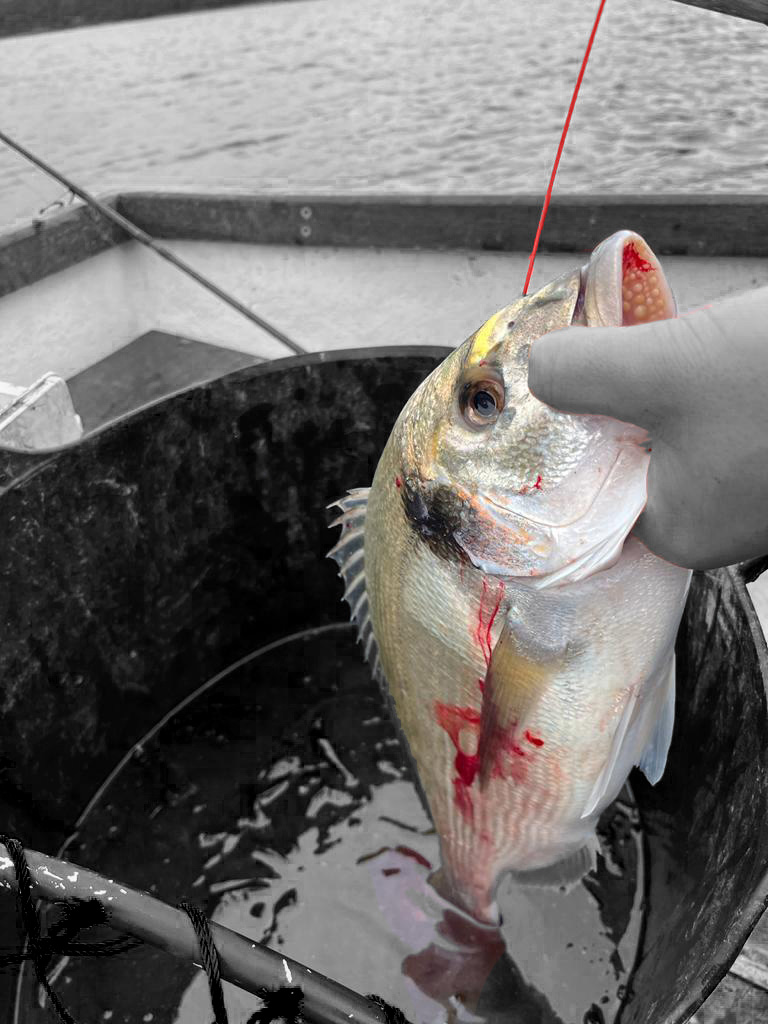Japanese techniques passed on to Cornish-fishermen:

Over the years, Yoshinori Ishii, the former executive chef at Umu, has visited Kernowsashimi on numerous occasions, going out on different boats and teaching everything he knew about the Ikejime method. Though it has taken years to be adopted, we now have six boats landing Ikejime fish, line-caught Seabass in particular. His passion has not only elevated Kernowsashimi but has also ignited the sparks for a fish revolution within the UK.
Ikejime Method:


Breaking Down the Three Phases of Ikejime:
1. Bleeding
Bleeding is not a concept exclusively associated with Ikejime. Bleeding of flatfish such as Turbot has been common the UK for many years, mainly to reduce reddening to the white underside, as well improving quality. Blood in the meat accelerates the rate of decay, therefore significantly reducing freshness. Additionally, the taste and color are like night and day when compared raw to a non-bled fish.
2. Ike-jime and Humane Killing
The principle of ikejime, is to disrupt the signal between the brain and the meat, thereby preventing the meat from getting the signal that it has died. This preserves as much Adenosine triphosphate (ATP), within the meat as possible. ATP, present in all cells, serves as a primary source of energy for cellular functions. After death, cells undergo anaerobic respiration, causing ATP breakdown, ultimately leading to the fish’s decay.
Asphyxiation, high-stress levels, and continuous thrashing upon capture often lead to rapid ATP depletion in fish. As a result, the time it takes for the fish to decay is very short. Ikejime minimizes the ATP consumption before death, maintaining high ATP levels and consequently prolonging the rate of decay.
Simplistically, this delays the whole process of decay, including the time it takes for the fish to reach peak rigor mortis, the maximum umami levels, and ultimately the shelf life.
Although the ikejime technique was developed for food quality reasons and to prolong shelf-life long before the days of refrigeration, it conveniently also doubles its benefits by ensuring the fish is killed instantly by the spiking through the brain.

3. Shinkei-jime
The third part is an additional step within the framework of Ikejime, technically known as Shinkei-jime. This step involves passing a wire through the fish’s spinal nerve. The reason for this is that even after death, signals are still sent from the nervous system, which can accelerate the depletion of ATP levels. By destroying this spinal nerve, the process further delays the decay of the fish.
All our fish sold under the Ikejime quality label undergo these three steps, while ensuring that temperature levels and all other quality-preserving measures are maintained.
